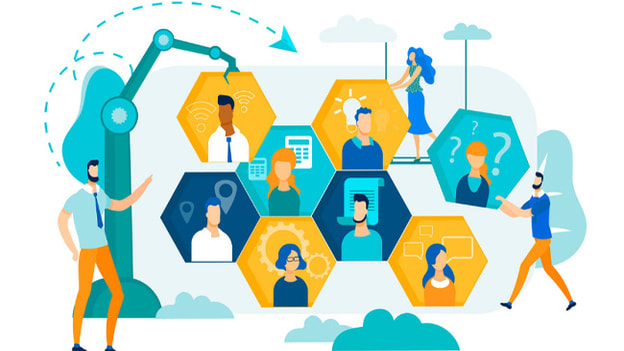Here’s how you can build the workforce of the future

In the pre-COVID world, describing an organization as a “well-oiled machine” was a common metaphor. The disruption and ambiguity that the pandemic has unleashed has unequivocally established the uncertainty of our collective future. However, our generation has also had the rare opportunity to build resilience by introducing flexibility in the way companies operate.
Today, we know that the future belongs to enterprises that behave more like an advanced organization than a fixed organization. Enterprises that are instinctive and fluid, with an adaptive workforce that can shift from functional roles to purpose-driven career paths that embrace change will lead the future.
We know that neither Bill Gates and Larry Ellison, nor Steve Jobs graduated college. All of these individuals still created the right innovations at the right time and established cultures that built winning companies. And that’s what we need more of today. Only a complete rethinking of talent and development models, as we know them, will guarantee future success.
Work experience and its (ir)relevance
Companies are increasingly dropping a vital criterion that was always key to a talent search: experience. Company boards are telling the world’s top headhunting firms not to hire CEOs from an existing pool, who are likely to repeat past action.
LinkedIn Learning, a blog on the professional networking platform, looked at its data to determine the 30 most in-demand skills companies are looking for, from the 50,000 skills listed on its site. Interestingly, more leaders say soft skills are more crucial than hard skills. The rise of artificial intelligence (AI) is making soft skills even more critical since these will remain what will separate us from automatons.
Assessment tools using technology tools, games, and social profiling are innovative markers to identify potential talent. And, when combined with in-person, in-depth immersion sessions, recruiters can separate passionate and intellectually agile candidates, with an inherent appetite for risk and problem-solving, from the rest.
Learn, unlearn, relearn, repeat
Even as COVID-19 has changed our lives, maybe forever, the need to adapt and reskill remains a constant. The life of a skill is short, about 3-5 years, and continuous reskilling will be imperative to survive in the new world. Online learning will be even more relevant than ever before. And customized learning paths will need to be chosen over the one-size-fits-all policy.
Today, traits that cannot be taught - curiosity, empathy, intuition, and instinct - are essential to survival and success. Hence, it is necessary to focus on individuals with the ability to navigate different roles and functions while they learn, unlearn, and relearn. One way to test for an employee’s learnability is for companies to offer rotational assignments. Not only can this help solve talent scarcity and improve employee retention, but it can also provide formal and informal learning paths and opportunities.
New ways of working
This circle of searching, wooing, hiring, and nurturing comes to nothing if your prized talent ultimately does not feel fulfilled at work. Potential leaders need to be understood. Organizations need to find effective ways to listen to them and involve them in creating better working experience. Set your people up for success with the right level of orientation. Provide less structure through more self-driven modules that they can use to define and manage their careers. Then track the effectiveness by measuring retention rates and new-hire productivity.
Given the stress of trying times like these, HR heads are also emphasizing the holistic well-being of the employees. With the introduction of the new trend of remote working, organizations need to look beyond hygiene problems – such as attendance and leave policies – and dive deeper into cultural shifts around virtual employee engagement programs that create a sense of community and strengthen culture.
Conclusion
A competitive employment offering isn’t enough anymore – and it likely won’t be the deciding factor in the future, either. As companies look to different sources of talent for their workforce of the future, they will require employees to be multi-dimensional, curious, and hold the promise of potential. And for leaders, building the workforce of the future requires imagination. Ensure work has meaning and purpose, leverage data to make sense of what people are good at, what they care about, and what the external environment demands, and equip organizations with the right skillsets to not just survive but thrive.













